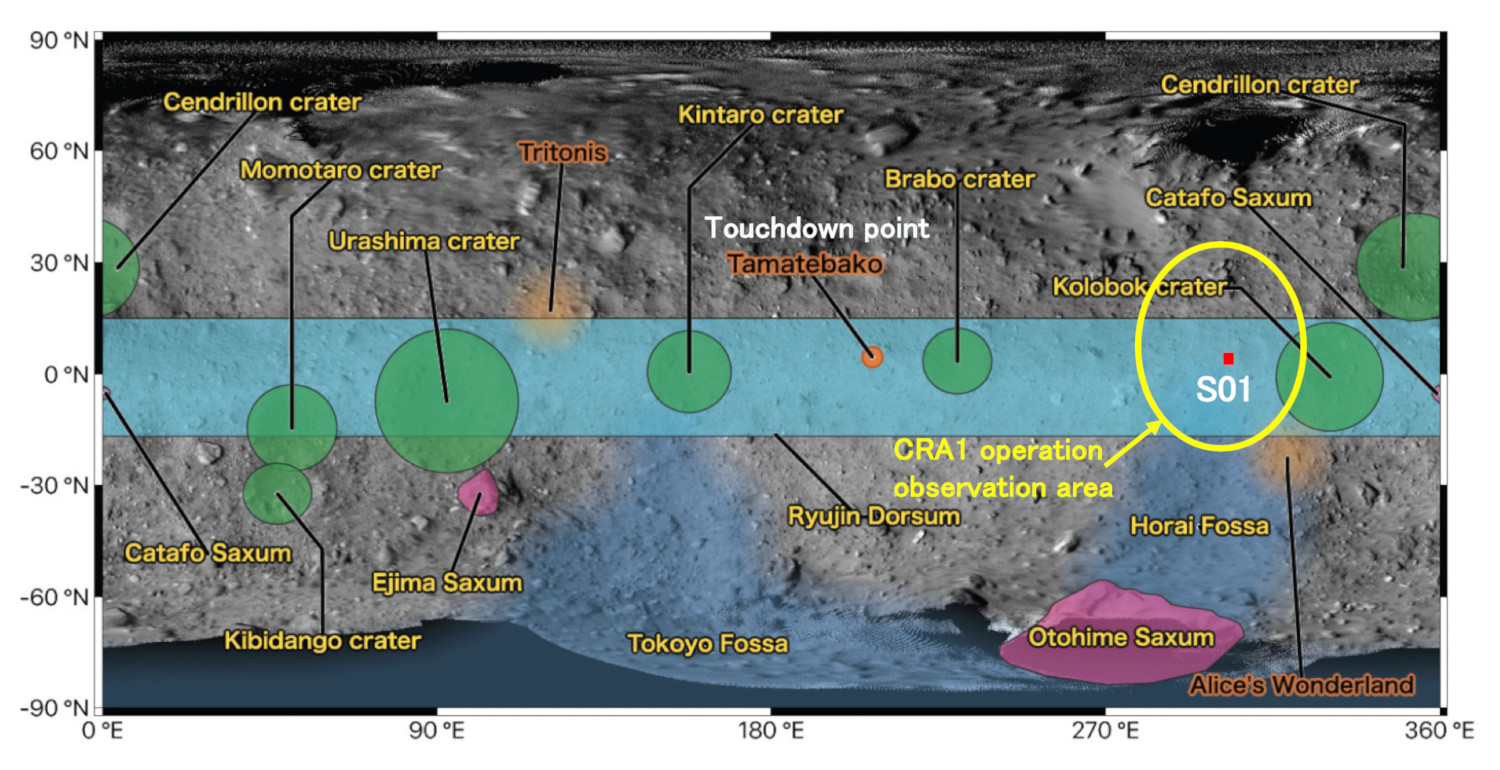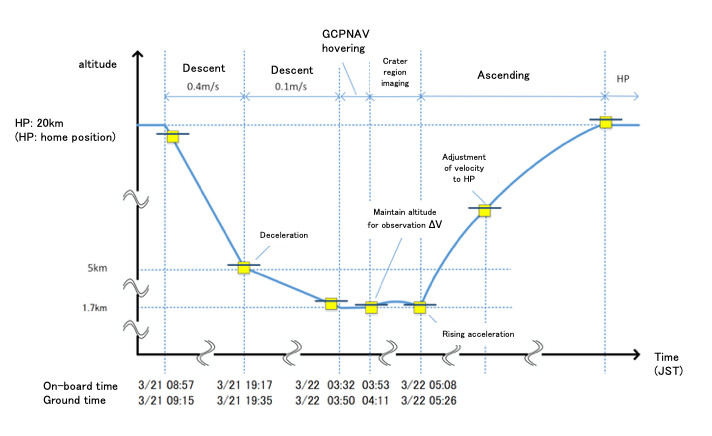Currently, we have scheduled the small carry-on impactor operation (SCI operation) for the first week in April. The purpose of the SCI operation is to create a crater on the surface of Ryugu, and it is important to be able to compare the asteroid surface before and after the SCI operation. Before performing the SCI operation, we therefore decided to observe the area where the crater is likely to be generated. This is the “Crater Search Operation (Pre-SCI)” (CRA1). The same observational procedure will be performed after the SCI operation and denoted “Crater Search Operation (Post SCI)” (CRA2).
The CRA1 operation will take place between March 20 – 22, 2019. Descent preparation work will start on the 20th and the descent will begin from the 21st. Observations at the lowest altitude reached (approximately 1.7km) will be from the 21st to 22nd and the spacecraft will ascend on the 22nd. Figure 1 shows the site that will be observed. This area includes the SO1 region that was observed during the Descent Observation Operation (DO-S01) conducted between March 6 – 8.
-

[Open in a separate window]
Figure 1: Area to observe during the CRA1 operation (image credit: JAXA).
The operation schedule is known in Figure 2. Hayabusa2 begins its descent on March 21 at 08:57 JST (onboard time) with a speed of 0.4 m/s. On the same day at around 19:17 JST, the speed will be reduced to about 0.1 m/s. The spacecraft will continue to descend and reach the lowest point (altitude approximately 1.7km) on March 22 at around 03:32 JST and continuously observe at that altitude for a while. Hayabusa2 will begin to ascend at 05:08 JST and return to the home position. Note that the times listed here are the planned values and the actual operation times may differ.
-

[Open in a separate window]
Figure 2: Schematic diagram of the CRA1 operation (image credit: JAXA).
Note: times listed here may differ from the actual operation.
Hayabusa2 Project
2019.03.15
(Translation 2019.03.20)

